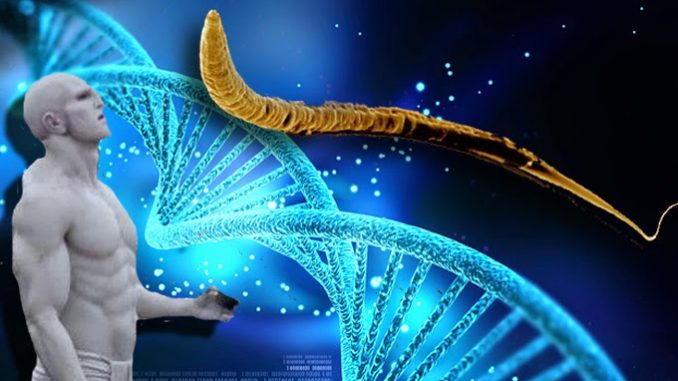
Scientists have said that there is evidence that suggests human life may have begun on another planet in the galaxy, and brought to Earth by a comet 4 billion years ago.
The theory that human DNA is alien is known as panspermia, and was first proposed in 1871, but new research has given the theory more credibility.

BYPASS THE CENSORS
Sign up to get unfiltered news delivered straight to your inbox.
You can unsubscribe any time. By subscribing you agree to our Terms of Use
Latest Video
Dailymail.co.uk reports:
Although no evidence to prove this has yet been found, the idea of panspermia, which remains on the fringe of mainstream science, is not considered as far-fetched as it once was, according to New Scientist.
Peter Ward, a biologist at the University of Washington in Seattle, told the magazine: ‘I think the case for Mars as the origin of Earth life is pretty good.’
He added that should proof be found that life on Earth is extraterrestrial in origin, it would have some pretty major impacts on current scientific and religious thinking.
He said: ‘It’s a big blow. For some religious fundamentalists, it is an axiom that there is but one life and it is here on Earth.’
Many scientists have pointed at the apparent suddenness of life appearing on Earth around 3.8 billion years ago at the same time conditions to support life became perfect.
Some scientists go further and say the entire Milky Way may be teeming with life.
Professor Chandra Wickramasinghe, an astrobiologist at the University of Buckingham and long time supporter of panspermia, believes Earth is constantly exchanging organic and even living material with planets around neighbouring star systems.
He was recently involved in the publication of several papers that found what he believes to be fossilised remains of organisms in meteorites and tiny algae-like organisms living high up in the Earth’s atmosphere that have been carried here by passing comets.
Speaking to New Scientist, Professor Wickramasinghe said: ‘this was conjecture in the past, purely theoretical, but now we have evidence for it. It’s changing slowly, but surely.’
In a paper published earlier this year in the Journal of Astrobiology, which Professor Wickramasinghe edits, he and his colleagues outlined how they think life may have arrived here on Earth.
They wrote: ‘Recent studies have led to detections of some 900 exoplanets in a nearby small sample volume of our galaxy.
‘Extrapolations from this study give an estimate of 140 billion habitable planetary systems in our galaxy alone, most of these being associated with faint red dwarf stars.
‘On such a basis the mean distance between life-friendly planetary systems is only a few light years.
‘This relatively short interplanetary distance is easily bridged by escaping dust, debris, meteorites and comets.
‘Material expelled at speeds greater than the escape speed from a planetary system like our own solar system will, in general, have hyperbolic orbits with respect to a nearby star, so the probability of direct capture will in general be very low.
‘However, sub-micron dust including bacteria and viruses released by transiting cometary bolides, even if they are in hyperbolic orbits, will be easily be stopped by friction (gas drag) in the interplanetary disc of the recipient planetary system, and thus serve to infect habitable planets.’
Put more simply, organisms and molecules on comets travelling past planets could be deposited on that planet.
Professor Wickramasignhe and his colleague Dr Milton Wainwright point to the remains of apparent microorganisms collected 16 miles (26km) up in the stratosphere by a high altitude balloon during the Perseid meteor shower in 2013.
Most recently, they found a strange tiny titanium metal orb about the same width of a human hair surrounded by an organic goo in their samples.
They have also studied meteorite material that contains structures which have been interpreted by some as fossilised microorganisms.
However, the idea is also gathering some supporters from the more mainstream side of science.
Only a few decades ago scientists considered the idea of alien life unlikely, but now Nasa scientists believe it is only a matter of time before evidence of life is discovered elsewhere in our solar system.
The US space agency is focusing on searching for signs of life on Mars while the European Space Agency is looking to the moon.
It is planning a robotic mission to drill beneath the surface of the Moon to look for meteorites that may provide clues to how life started on Earth and if it was carried here from elsewhere.
Scientists at Nasa have also conducted experiments using simulated meterorites fired into space and allowed to reenter the atmosphere.
These have shown DNA and some bacterial spores can survive the extreme heat and pressures of entering the Earth’s atmosphere.
This has lent support for some of the fundamental ideas underpinning panspermia.
Several leading scientists including Professor Stephen Hawking and the Astronomer Royal Martin Rees last month backed a new $100 million bid to hunt for alien life.


